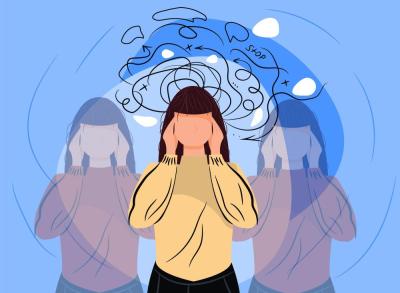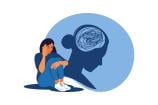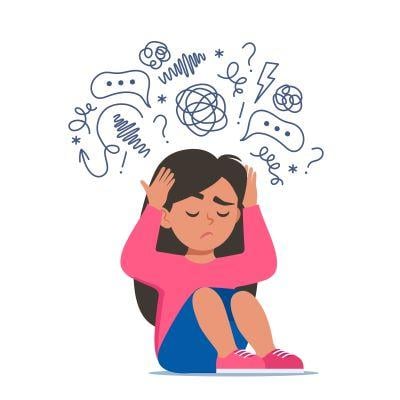An Inspirational Tool to Reframe Your Everyday Thoughts
An Inspirational Tool to Reframe Your Everyday Thoughts

Changing our ingrained thought patterns has historically proven to be a troublesome process. The cause behind this ultimate challenge to our health and well-being is none other than our most complex, ingenious, and mysterious organ: let's hear it for your brain! It makes sure that once we’ve gotten into a particular way of thinking, things don’t change. Thoughts that have long outlived their purposefulness are weirdly difficult to let go of: thoughts about perfectionism, what we should be doing, procrastination, shame, regret, self-doubt, etc. So, it is not at all surprising that many people feel stuck in old thought patterns. And, consequently, trapped in the grasp of anxiety and depression.
Most of us do not know how to practice thinking differently. We usually can grapple with the why; why it’s important for our health to make a change such as losing weight, being less anxious, having more self-compassion, being grateful, etc. So we browse the Internet, listen to podcasts, and watch YouTube videos, gathering loads of helpful how-to information, and then (drumroll…) we continue doing the same stuff we’ve always done.
We invite you to learn about self-talk as a simple yet highly effective secret weapon to battle anxiety and depression. We advocate for creating short phrases that guide us and focus our intentions. These phrases are the path to channeling purpose, direction, and affirmation into the mind and, consequently, into the routine of living. When the brain has a repeated thought, it creates a neural pathway in your brain. New pathways only last long if they are supported and repeated. Think about when you study for a test; you can hold the information in your mind until the day of the test but then forget it if you no longer think about it or use it in day-to-day life. In academia, they refer to this as the forgetting curve. Essentially if you do not practice or review the information that you want to retain, your brain efficiently weeds out the unused neural pathway, making room for new information to be stored. Self-talk phrases encourage you to repeat your new thoughts and shift your outlook.
What follows is an outline of how to create a self-talk phrase for yourself. Perfectionism and stress are the issues in the example, but of course, you can fill in the issues you are dealing with. After deciding on a phrase, try it out a few times and see if it flows and resonates. Does it redirect your thoughts? Are there any changes or rephrasing needed? If so, reflect on your brainstorming work and see how to tweak the verbiage until it feels right.
What is the trigger or situation (who, what, where, when) and the thought or belief?
I have so much to do I will never get it all done. I know that I tend to tie my self-worth with how much I get done. On the weekends, I need to clean the whole house, go grocery shopping, wash the clothes, change the sheets, mop the floors, cook food for the week, the list goes on.
Pay close attention to your emotions or feelings.
- Stress
- Anxiety
- Depression
Challenge your thoughts and think about their origin.
I would like to focus on getting one thing done at a time and not overreacting when I inevitably don’t get to everything. I believe these thoughts stem back to seeing my mom doing everything growing up, and I want to be the same way. But, I am still valuable no matter how much I get done and would like to let myself enjoy life along the way.
Note some ways you can practice being aware of your body. This will lead to a more accurate acknowledgment of your thoughts and feelings.
- I will take deep breaths regularly, think about my posture, and do some stretching every hour for my neck.
Is there a visual image that would help you separate from your thoughts and feelings?
- Thinking of my thoughts as a river flowing and not taking them as truth.
Is there a song, quote, saying, or movie line that inspires you?
- My List - song by Toby Keith
- I’m in a Hurry (and Don’t Know Why) - song by Alabama
- “Anxiety is like a rocking chair. It’s something to do, but it doesn’t get you very far.”- Jodi Picoult
Brainstorm healthy words or phrases to tell yourself when unwanted thoughts and feelings occur.
- I need to have“living” on my to-do list
- Life is not about perfection
- Anxiety doesn’t get me very far
- I’m in a hurry and don’t know why
Pick the phrase that resonates the most with you.
Your Phrase: Living is on My List!
We encourage you to post visual reminders of your phrases and repeat them to yourself each day. We love using sticky notes to do this! Keeping a journal about your progress is also highly recommended. Review your answers to the questions above and add to them. It takes time, effort, and reflection, but altering those thoughts that need the boot is worth it!
We’d love to hear the phrases you create on our blog page, stickynotemantras.com. We recently published a book called Sticky Note Mantras: The Art and Science of Choosing Your Thoughts. It has tons more information, exercises, inspiration, and ready-made phrases.
To learn more, check out ADAA's patient resource guide, Anxiety and Depression Association of America Patient Guide to Mood and Anxiety Disorders.






















